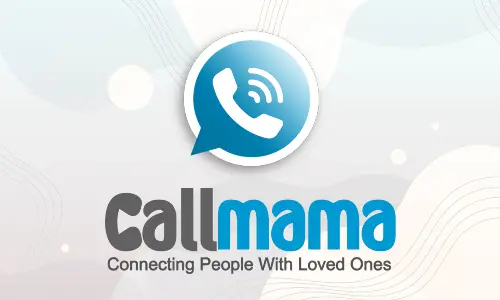Introduction
Phone conference call has become an indispensable communication tool for businesses, organizations, and even families. It allows groups of people in different locations to have meetings and discussions without having to physically be in the same place. This makes it easy to connect employees, clients, partners, and others no matter where they are located.
The technology behind phone conferencing is relatively simple. It involves using a conferencing service that provides a dial-in number and access code Phone Conference Calling. To start a conference call, the host dials the number and enters the code, which brings them into the conference line. Other participants then dial the same number and enter the code to join the call. The conferencing service links everyone together into one shared call.
Most conferencing services provide features to help manage larger conference calls. These can include the ability to mute and unmute lines, bring multiple callers into sub-conferences for private discussions, record conferences, and more. The host has control of these features through an online dashboard or control panel. Some services provide toll-free dial-in numbers to make it more convenient for participants to join.
When setting up a conference call, it is important to provide the dial-in information well in advance to all required participants. This includes the date, time, phone number, access code, and any other relevant instructions. It is also good practice to remind participants shortly before the call. For recurrent meetings, setting up a recurring conference call number and circulation schedule helps simplify the process.
Overall, phone conferencing increases productivity and collaboration by enabling communication that transcends geographic boundaries Phone Conference Calling. Participants can dial in from anywhere with phone service, avoiding travel costs and hassles. The ability to bring together dispersed teams and workgroups is essential for many businesses today. Though face-to-face meetings have their purpose, Phone Conference Calling provides flexibility and accessibility that is hard to match.
Define conference calling and explain its benefits.
Conference calling is a phone-based technology that allows multiple people to participate in the same phone conversation from different locations. A conference call brings together groups of people, often employees or business associates, through a central “bridge” number managed by a conferencing service provider.
To start a conference call, the host dials the bridge number and enters a passcode, which places them into the conference line. Other participants dial in and enter the same passcode to join the call. The conferencing system links each caller together Phone Conference Calling, letting everyone participate in the same conversation as if they were together in one room. The number of participants that can join a conference call depends on the capacity of the conferencing service, but it’s common to have 10-20 people or more on a single call Phone Conference Calling.
There are many benefits to using conference calling rather than traditional phone calls between two parties. First, conference calling eliminates geographical limitations – it allows real-time communication between participants in different cities, states, or even countries. This makes conference calls ideal for teams that are geographically dispersed. Participants can dial in from their office, home, or even while travelling, without expensive travel costs.
Conference calling improves productivity and speeds up decision-making. Rather than waiting for separate one-on-one calls, groups can discuss issues and make decisions together in real-time. Meetings are more focused and efficient when everyone is conferenced in at once. The ability to brainstorm together outweighs the potential for distraction.
For recurring team meetings, conference calling also provides convenience and consistency. Setting up a standing conference call number and time each week or month simplifies scheduling. Participants can rely on the call taking place without coordinating individual availability. This improves attendance and participation rates compared to traditional in-person meetings.
In summary, conference calling enables efficient communication and collaboration within businesses and organizations. By bringing team members together instantly regardless of location, it increases productivity, facilitates decision-making, and generally improves operations Phone Conference Calling. Phone Conference Callingcalls are scalable, convenient, and a staple of effective teamwork.
Highlight the key features of a good phone conference calling service.
Choosing the right conferencing service is crucial for enabling productive and seamless phone conference calls. The key features to look for in a robust business conferencing solution include:
Reliable technology – The quality of the audio and clarity of the connection is paramount. The service should offer clear digital audio with minimal lag or choppiness even when multiple participants are on the line. The system must be able to handle fluctuations in call volume without disruption.
Easy dial-in process – Joining a conference call should be simple and straightforward for participants. This means providing toll and toll-free dial-in numbers, customizable and memorable access codes, and clear dial-in instructions. A good conferencing provider makes it easy for participants to connect every time.
Strong security – Protection of sensitive information and data is vital on business calls involving multiple employees or external partners. The conferencing system should use PIN codes, encrypted connections, and other security controls to prevent unauthorized access to calls.
Robust call management features – Hosts need full control over managing a call. This includes muting/unmuting lines, bringing callers into sub-conferences, recording, live streaming, and more. A control panel or dashboard offers visibility into who is on the line and call activity.
Scalability – The service should easily accommodate small calls with just a few participants up to very large calls with hundreds of callers. Dynamic scaling means paying only for the capacity needed for each conference call.
Customer support – Reliable customer service ensures Phone Conference Calling calls start and run smoothly. This includes 24/7 technical support in case any issues arise before or during a scheduled call.
Reporting and analytics – Usage reports help track Phone Conference Calling habits and optimize spend. Analytics around engagement, call quality, participants, and other metrics provide valuable business insights.
Cost-effectiveness – The best value Phone Conference Calling solutions offer competitive pricing with no hidden fees. Volume discounts, toll-free numbers, and bundled plans help keep costs down for frequent users.
Accessibility features – Accommodations like closed captioning, recordings, and conference call transcripts make conferencing accessible for different ability levels.
Global coverage – For multinational organizations, the service should provide dial-in numbers that work internationally and have the capacity to bridge many locations.
By evaluating conferencing solutions against these key criteria, businesses can select a service that enables seamless collaboration through high-quality and reliable conference calling.
Features
Phone conference call has many useful features that facilitate productive group conversations for businesses and organizations. Understanding these capabilities makes it easier to have engaging and efficient conference calls.
Dial-in Numbers – All participants dial the same conference bridge number to connect to the call. The host provides a toll or toll-free number, plus an access code, in the invite to make joining simple.
Call Capacity – Conference call services support different capacities, from small calls under 10 people up to hundreds of participants. Advanced reservation features help plan for larger groups.
Security Codes – Unique PIN codes or passcodes help control access to each call. This prevents unauthorized participants from joining sensitive business discussions.
Call Recording – Many services allow hosts to record conference calls for future reference, documentation or to share with absent participants. Recordings may be stored locally or in the cloud.
Mute/Unmute – Hosts can mute or unmute one caller’s line or all lines to avoid background noise interference. The mute feature allows presenters to speak uninterrupted.
Q&A Management – Participants can virtually “raise a hand” to take turns speaking. The host can open phone lines one at a time to avoid people talking over each other.
Polling & Surveys – Interactive features like polling let hosts gauge opinions and feedback in real time over a conference call. Some services integrate with survey tools.
Screen & File Sharing – Video conferencing integration or computer-based dashboards allow presenters to share their screens or documents to supplement the call.
Virtual Rooms – Large calls can break into smaller separate sessions via virtual rooms for subgroup discussions and then return to the main call.
Recording & Playback – Calls can be recorded for people who couldn’t attend live to play back later. Transcripts may also be provided.
Mobile Apps – Apps allow users to connect to a Phone Conference Calling call from a mobile device. This provides call access on the go.
Customer Support – Reliable tech support assists with any Phone Conference Callingcall issues before, during, or after the call takes place.
Analytics – Usage reports provide insight into conferencing habits to optimize spend. Live dashboards track key call metrics.
International Dial-in – Global toll and toll-free numbers make it easy for international participants to join Phone Conference Calling calls.
By leveraging these useful features, businesses and teams can have productive and engaging conference call experiences. The right conferencing service makes connecting simple for any group.
Crystal-clear audio quality
A top priority for any Phone Conference Calling service should be providing crystal-clear audio quality on every call. Minimal background noise, echo, jitters, or dropped connections allow for seamless conversations without disruptions. Advanced audio engineering with noise cancellation ensures everyone can hear and be heard regardless of their environment. With clear audio, participants can pick up on tone and nuance in the discussion, not just the words alone. This drives more productive meetings, ideation, and decision-making. True high-definition conferencing audio brings distributed teams together as if they were in the same room.
Face-to-face meetings
Face-to-face meetings allow for more personal connections and deeper engagement than virtual meetings. In-person meetings foster team bonding through informal conversations before and after the official meeting. Body language and facial expressions convey as much as the spoken word. Direct eye contact builds trust. Spontaneous interactions spur creativity. The energy in the room creates momentum. Being together makes it easier to read reactions and adjust discussions. In-person meetings facilitate relationship building that strengthens collaboration, alignment and commitment to goals. While virtual meetings work, face-to-face meetings build the interpersonal foundation for effective teams.
Team projects
Team projects enable collaboration, skill development, and relationship building. Dividing work builds efficiency, as members utilize their diverse strengths. Brainstorming sparks creativity, blending ideas into innovative solutions. Tracking progress fosters accountability and timeliness. Meeting deadlines requires cooperation and coordination. Resolving disagreements constructively deepens bonds. Celebrating wins together builds morale and goodwill. Post-project reviews capture learnings to improve future efforts. Well-facilitated team projects provide meaningful work experiences. Participants gain confidence in their abilities to handle multifaceted assignments. Teammates develop trust and respect for each other. Successfully delivering as a team is rewarding and fulfilling. Team projects prepare people for cooperative endeavours in life.
Brainstorming sessions
Brainstorming sessions unleash creativity by encouraging imaginative thinking without judgment. Setting ground rules creates psychological safety to voice unconventional ideas. Building on others’ suggestions takes collaboration to new heights. Wild concepts spark innovative approaches. Quantity breeds quality – the more ideas, the more likely game-changing ones emerge. Writing down all contributions maintains momentum. No editing happens at the moment. Evaluation comes later to identify the most promising options. Laughter and energetic exchange promote out-of-the-box solutions. A diversity of perspectives enriches the ideation process. Timeboxing focuses on the flow of inputs. Well-facilitated brainstorming produces possibilities beyond individual capabilities. Harnessing collective minds drives innovation.
Group calls
Group calls enable collaboration across distances through virtual communication. Video Phone Conference Calling creates visual engagement and human connection. Seeing teammates’ faces fosters trust and relationship building. Screensharing allows interactive walkthroughs of materials to align understanding. Breakout rooms provide opportunities for smaller team discussions. Polls and reactions gauge real-time feedback. Chat windows facilitate sidebar conversations. Recording meetings permit attendees to revisit discussions. Following structured agendas optimizes time together. Limiting participants to those strictly necessary improves efficiency. Written recaps share updates with wider stakeholders. Etiquette around muting mics avoids disruptive noise. Well-run group calls bridge geographical divides, unite dispersed teams, and enable collective productivity. Virtual tools make teamwork possible anywhere.
Audio technology
Audio technology immerses listeners in rich soundscapes and impactful storytelling. Wireless headphones and earbuds allow portable, private audio enjoyment. Smart speakers fill homes with music, news, and voice assistants through AI integration. Soundbars and home theatre systems create surround sound cinematic experiences. Microphones capture vocals, instruments, and audio ambience from live events. Audio interfaces and mixers shape professional-grade recordings. Digital audio workstations craft podcasts, songs, and audiobooks. Music streaming delivers expansive libraries on demand. Voice calls enable real-time connection and collaboration. Noise cancellation removes unwanted ambient sounds for clearer playback. Whether for entertainment, information, creativity, or communication, innovative audio tech makes life richer, more convenient, and better connected. Immersive, high-fidelity audio content engages ears and emotions.
Video conference
Video Phone Conference Calling connect remote teams face-to-face through real-time video and audio. HD webcams showcase visual reactions and body language. Screensharing demonstrates materials interactively. Annotation tools emphasize key points. Integrated whiteboards foster creative collaboration. Polls, chats, and reactions provide instant feedback. Breakout rooms enable simultaneous smaller group dialogues. Recording meetings allows subsequent viewing. Secure connections protect sensitive discussions. Some platforms offer automated transcripts, translations, and meeting summaries. Scheduling ease enables impromptu or regularly recurring meetings. Despite physical distances, video conferencing replicates in-person meetings through virtual interaction. Seeing colleagues fosters stronger relationships and trust. Video creates a human touch across miles. With reliable internet access, video conferences empower seamless remote teamwork and collaboration.
Availability software
Availability software enables teams and customers to see real-time status and coordinate connections. Calendar integration displays scheduled events and availability. Presence indicators show who is online, busy, or offline. Custom status messages provide updates. Chat functions allow quick conversations. Video and voice calling features face-to-face interactions. Screen sharing fosters collaborative work. Time zone displays bridge location divides. Channel discussions organize topics and groups. Notification settings inform people of relevant updates without distraction. Mobile apps keep teammates connected on the go. Availability software provides transparency into people’s schedules and availability to improve coordination. Streamlining communication channels, powers productive collaboration, efficient teamwork, and responsive customer service across distances.
Benefits Phone Conference Calling
Phone conference calling offers a convenient and flexible way for teams to connect and collaborate remotely. By dialling into a conference line, participants across any location can join the Phone Conference Calling. This provides several key benefits:
Cost-Effective Phone conferencing represents a cost-effective alternative to in-person meetings involving travel and accommodations. Organizations save on expenses when participants call in rather than fly or drive to a central meeting point. The phone service subscription costs pale in comparison to travel budgets. This makes regular team sync-ups affordable and accessible.
Ease of Use Conference calls are simple and straightforward. Participants just dial the number and enter any required passcodes to join. No complex technology or onboarding is needed. This simplifies scheduling, as users do not need training on a platform. Quickly distributing a phone number enables last-minute meeting invites when urgent discussions are needed.
Flexibility Phone conferencing allows participation from anywhere with phone connectivity. Whether at home, in the office, or on the go, team members can dial in. This provides flexibility for people juggling priorities and managing dynamic schedules. Patients, students, parents, and others can call in without location restrictions. The technology’s ubiquity delivers a flexible conferencing solution.
Inclusiveness Phone access is widely available, enabling inclusive meeting attendance. A dial-in number is the lowest common denominator, allowing participation across demographics. Unlike web conferences reliant on internet access and device capabilities, phone calls permit connection from any cell or landline. This democratizes meeting involvement.
Scalability Conference lines easily scale to accommodate large meetings by allowing hundreds of callers to join. This facilitates company-wide announcements, training sessions, or town halls. The host controls muting and unmuting to manage noise and distractions for quality large group discussions. Scalability also enables splitting into sub-groups via breakout calls.
Reliability Phone connections offer reliability compared to spotty internet necessary for video meetings. Remote areas with poor broadband access can maintain consistent phone access. This ensures people can join discussions without technical troubles detracting from the conversation. Phone audio also avoids bandwidth lags and distortions.
In summary, with broad accessibility, scalability, ease of use, flexibility, cost savings, and reliability, phone conferencing delivers an indispensable tool for bringing distributed teams and dispersed organizations together. The simple but powerful technology keeps communication open for collaboration, planning, and collective progress on goals.
Providers List of popular phone conference calling providers, with their features and pricing.
Many providers offer phone conferencing services with varying features and pricing Phone Conference Calling. Popular options include:
RingCentral provides audio, video, and web conferencing. Their Essentials plan starts at $24.99 per month supporting 100 participants. Premium plans offer toll-free numbers, call recording, and transcription.
UberConference provides free conference calling supporting up to 10 participants. Paid plans starting at $10 per month offer unlimited calling, international dial-in numbers, and call recording.
CallMama offers dial-in phone conferencing supporting up to 400 participants, with 300 free minutes per month starting at $10. Unlimited conference call minutes, support for larger groups, and video meetings are available on higher tiers.
Join. Me offers audio conferencing with screen-sharing capabilities. Their Pro plan is $20 per month for unlimited calls with up to 250 participants. Advanced plans add video, recording, and toll-free numbers.
FreeConferenceCall.com provides free phone conferencing with no participant limit. Upgrade options include dedicated access numbers, recording, and conference management tools.
Zoom Phone starts at $10 per month for unlimited US/Canada calling, 100 participants, and advanced call routing features. International dial-in and cloud recording cost extra.
Overall, leading providers offer robust conference calling capabilities on flexible plans with tiered pricing suitable for different organizational needs and meeting scales. Comparing features like capacity, recordings, and mobility support aids in selecting the best provider.
How to set up and conduct a successful conference call.
Technology check: Test the conferencing platform features and your audio/video ahead of time to ensure proper functioning. Send dial-in details early: Provide phone numbers, access codes, and other required logistics well in advance so participants can join seamlessly.
Set an agenda: Create a defined agenda and share it prior to keeping the discussion productive and on track.
Minimize background noise: Mute when not speaking to eliminate distracting sounds like typing that detract focus. Use a quiet space without ambient disruption.
Introductions and roll call: Ask participants to state their names when joining and taking turns speaking so everyone knows who’s present.
Facilitate engagement: Solicit input through directed questions. Conduct polls or reactions to keep people attentive and included.
Manage time: Timebox agenda topics and reign in digressions. Confirm the remaining available time during the meeting to maintain the schedule.
Meeting notes: Designate someone to document key discussion points, action items, and decisions for post-meeting distribution.
Limit distractions: Stay off mute when not required to actively listen. Refrain from multi-tasking.
Wrap-up: Confirm action items, next steps, and logistics for follow-up. Share meeting notes and thank participants for their time and contributions.
Following best practices for preparation, execution, engagement, time management, and follow-through will lead to productive conference call experiences for the team.
Conclusion
Phone conferencing provides a versatile, easy-to-use collaboration solution for remote teams. Key takeaways include the technology’s affordability, accessibility, scalability, and reliability compared to alternatives like video conferencing. With just a dial-in number, organizations can conduct meetings at a fraction of travel costs and without complex software. The solution integrates seamlessly across operations, from daily standups to quarterly reviews and everything in between, facilitating productivity.
CallMama specifically offers top-rated audio conferencing supporting up to 400 participants with international dial-in numbers. With call recording, conference management controls, and flexible pricing tiers, CallMama powers effective remote teamwork through conference calls.
Looking ahead, enriched features like real-time language translation, built-in cloud recording transcriptions, and conference call analytics present exciting potential. However the core simplicity and dependability of dial-in phone conferencing will remain vital for enabling collaboration. For an intuitive platform to align teams across distances, learn more about industry-leading providers like CallMama. Reliable and budget-friendly conference calling helps organizations everywhere achieve goals and nurture growth through remote engagement.











